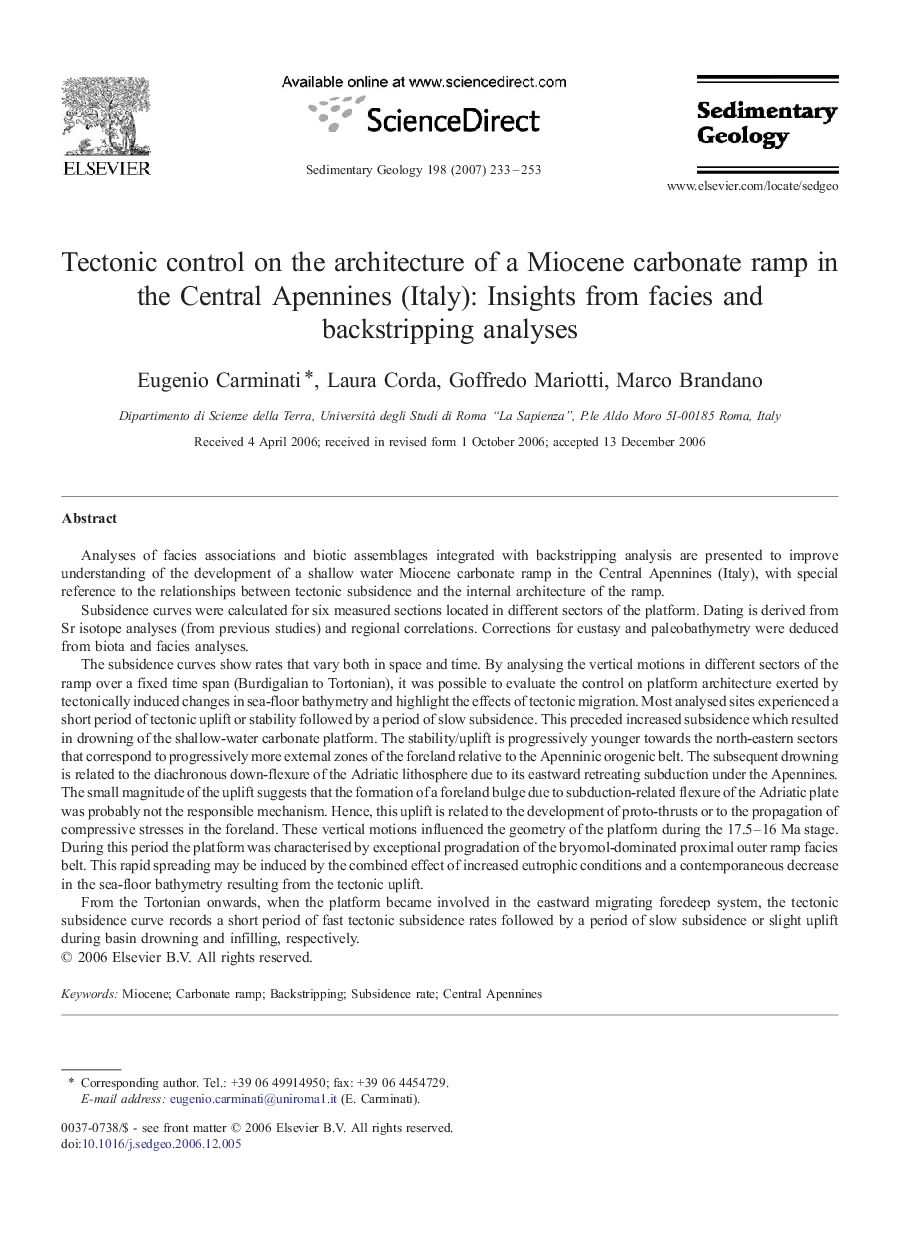| کد مقاله | کد نشریه | سال انتشار | مقاله انگلیسی | نسخه تمام متن |
|---|---|---|---|---|
| 4690873 | 1636169 | 2007 | 21 صفحه PDF | دانلود رایگان |

Analyses of facies associations and biotic assemblages integrated with backstripping analysis are presented to improve understanding of the development of a shallow water Miocene carbonate ramp in the Central Apennines (Italy), with special reference to the relationships between tectonic subsidence and the internal architecture of the ramp.Subsidence curves were calculated for six measured sections located in different sectors of the platform. Dating is derived from Sr isotope analyses (from previous studies) and regional correlations. Corrections for eustasy and paleobathymetry were deduced from biota and facies analyses.The subsidence curves show rates that vary both in space and time. By analysing the vertical motions in different sectors of the ramp over a fixed time span (Burdigalian to Tortonian), it was possible to evaluate the control on platform architecture exerted by tectonically induced changes in sea-floor bathymetry and highlight the effects of tectonic migration. Most analysed sites experienced a short period of tectonic uplift or stability followed by a period of slow subsidence. This preceded increased subsidence which resulted in drowning of the shallow-water carbonate platform. The stability/uplift is progressively younger towards the north-eastern sectors that correspond to progressively more external zones of the foreland relative to the Apenninic orogenic belt. The subsequent drowning is related to the diachronous down-flexure of the Adriatic lithosphere due to its eastward retreating subduction under the Apennines. The small magnitude of the uplift suggests that the formation of a foreland bulge due to subduction-related flexure of the Adriatic plate was probably not the responsible mechanism. Hence, this uplift is related to the development of proto-thrusts or to the propagation of compressive stresses in the foreland. These vertical motions influenced the geometry of the platform during the 17.5–16 Ma stage. During this period the platform was characterised by exceptional progradation of the bryomol-dominated proximal outer ramp facies belt. This rapid spreading may be induced by the combined effect of increased eutrophic conditions and a contemporaneous decrease in the sea-floor bathymetry resulting from the tectonic uplift.From the Tortonian onwards, when the platform became involved in the eastward migrating foredeep system, the tectonic subsidence curve records a short period of fast tectonic subsidence rates followed by a period of slow subsidence or slight uplift during basin drowning and infilling, respectively.
Journal: Sedimentary Geology - Volume 198, Issues 3–4, 1 June 2007, Pages 233–253